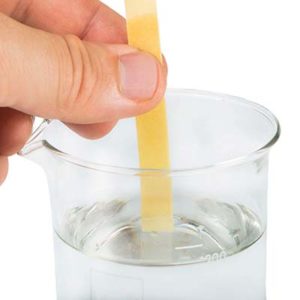Contents
By hydroponics, plants are grown without soil. Rockwool, coconut coir, clay pellets, perlite, etc., act as inert agents to prop up the root system, while water-soluble minerals provide nutrients. To ensure that your plant’s survival, plant roots should have direct access to both nutrients and oxygen in the air.
How Does Hydroponics Work?
Unlike conventional plants, hydroponic plants’ roots reach the hydroponic nutrient solution directly and do not require an elaborate root system to obtain essential nutrients. The energy can instead be used to nurture the leaves and stem. Additionally, since hydroponic plants have a small root system and are confined, they take up less space and grow more over a larger area than non-hydroponic plants. As a result of the absence of soil-based pests, hydroponic plants grow faster. Hydroponic plants benefit from oxygen as oxygen facilitates rapid nutrient uptake, resulting in optimal growth. Plants are grown effectively and efficiently in hydroponics, even in small areas.
How Does pH Affect Hydroponics?
 Hydrogen ion concentration in solutions calculates to its pH value. A pH value is a major factor in determining how soluble nutrients are in a hydroponic solution, which impacts the mobility and uptake of essential nutrient ions in healthy plants.
Hydrogen ion concentration in solutions calculates to its pH value. A pH value is a major factor in determining how soluble nutrients are in a hydroponic solution, which impacts the mobility and uptake of essential nutrient ions in healthy plants.
In hydroponic systems, a pH of 6.3 is considered ideal. Hydroponic plants grow well in a pH range of 5.8 to 6.8. Having a pH too high or low will prevent absorption of nutrients and will cause nutrient deficiencies, while certain nutrients will be absorbed heavily and cause toxicity. Hydroponics is therefore dependent on maintaining the desired pH level. Because different regions may have hard or soft water, the pH level will never be the same.
Maintaining pH in Hydroponics
Using pH-Up and pH-Down solutions, you can maintain the pH level of the nutrient reservoir hydroponic systems. In general, acidic solutions are used to lower pH levels and base solutions to raise pH levels. Generally, acidic solutions lower pH levels and base solutions raise pH levels.
The best pH-Up solution is potassium hydroxide, while phosphoric acid is regarded as the most useful pH-Down solution. After using these solutions, they should be allowed to diffuse for a short period before being administered again. As a pH-Down agent, weak acids such as household citric acid can be used in organic hydroponics. Sodium hydroxide is also effective as a pH-decreasing solution; however, it is more hazardous than phosphoric acid.
As an alternative, vinegar or baking soda can be used as pH-ups and pH-downs, respectively. In contrast, household solutions do not provide long-term benefits due to the lack of pH buffers present in commercial products. pH-Up and pH-Down products are cost-effective alternatives for maintaining pH to optimal levels; however, automatic controllers do not deliver the same performance levels. There are plenty of nutrient products on the market that use ammonium nitrate to counteract pH fluctuation in hard or alkaline water sources. Follow the manufacturer’s recommendations for any adjustment product you use.
Additional FAQs
What are the pH levels?
The pH scale ranges from 0 to 14, with 0 being the most acidic, 14 being the most alkaline, and 7 is the pH-neutral point.
What are the effects of nutrient deficiency?
Iron deficiency causes pale or yellow leaves in young plants, while leaf cupping and tip burn are telltale signs of calcium deficiency.
What are the optimal pH levels in hydroponics?
Hydroponic nutrient products typically start with pH levels between 5.5 and 6.0, the optimal level for most crops.
What pH range should I use for hydroponically grown crops?
With some exceptions, the sweet spot or the optimum range for hydroponically grown crops is generally between 5.5 and 6. Other plants require an alkaline environment, while others prefer acidic conditions.
What Causes pH to Change in Hydroponic Systems?
When the nutrient solution drops below one gallon, the solution becomes more concentrated as plants absorb the nutrients.
How do I know if my pH is right?
The first step in maintaining the right pH levels is testing on a daily basis. Testing the pH of the perfect base nutrients with liquid test kits and paper test strips (litmus strips) with a PH-sensitive dye is probably the most affordable method. Based on the comparison of the paper strip with a color chart, the pH level of the solution is determined. On the other hand, using a digital meter is more high-tech and gives a more accurate pH reading.
What water should I use for Hydroponic systems?
It is a recommendation to use distilled water or reverse osmosis water when possible. From hobbyists to huge commercial farms, several hydroponic growers prefer using treated water due to the calcium and magnesium salt in tap water (not to mention the chemically complex well and spring waters).
What are the pH levels in your hydroponic system?
The pH of this is between 6 – 8, which means it can be added with no significant pH swings in either direction.

